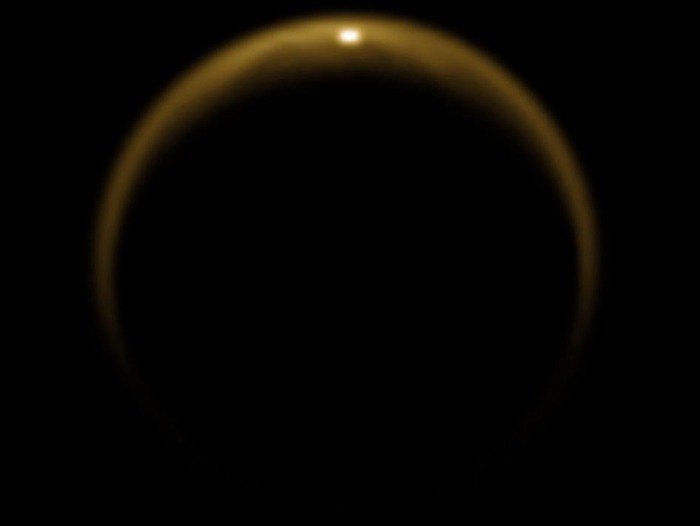PASADENA, Calif., Feb. 5 (UPI) -- NASA says its Cassini mission has seen in more detail than ever before how aerosols create "smog" in the highest part of the atmosphere of Saturn's moon Titan.
Understanding aerosol formation at Titan could help predict the behavior of similar smoggy aerosol layers on Earth, NASA's Jet Propulsion Laboratory in Pasadena, Calif., reported Monday.















